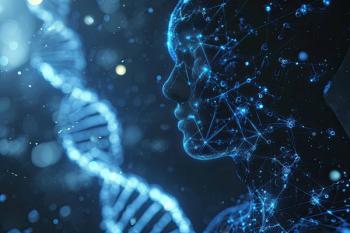
Identifying and Discovering Marine Lipid Biomarkers Using LOBSTAHS
Discovering and identifying molecular biomarkers in large LC–MS data sets requires automation without loss of accuracy. Benjamin Van Mooy from the Wood Hole Oceanographic Institution reveals a lipidomics strategy using LOBSTAHS to identify lipid, oxidized lipid, and oxylipin biomarkers in high mass accuracy HPLC– MS data.
Discovering and identifying molecular biomarkers in large LC–MS data sets requires automation without loss of accuracy. Benjamin Van Mooy from the Woods Hole Oceanographic Institution reveals a lipidomics strategy using LOBSTAHS to identify lipid, oxidized lipid, and oxylipin biomarkers in high mass accuracy HPLC– MS data.
Your recent publication (1) detailed a screening methodology for oxidised lipids and oxylipins biomarkers in the marine environment. What led your group to create this method?
My research group at the Woods Hole Oceanographic Institution (WHO) studies phytoplankton and other microorganisms in the ocean. Oxidized lipids are made by phytoplankton when they are stressed, whether it be from lack of nutrients, encounters with predators, or viral infection. Phytoplankton capture carbon dioxide through photosynthesis, and we wanted to use oxylipins to better diagnose the health of phytoplankton populations and constrain their role in ocean carbon cycling. Since the spectrum of oxidized lipids and oxylipins made by phytoplankton is largely unknown, we sought to develop an untargeted method that would enable us to see the full diversity of these molecules while still providing enough information to tell them apart from other lipids and assign tentative identification.
What are the problems associated with screening for oxidized lipids and oxlipins?
The major problem was dealing with the shear diversity of the lipids in our typical samples, which makes teasing out the oxidized lipids and oxylipins very difficult. This was confounded by the lack of standards. I give the groups in Jena (German) and Naples (Italy) a lot of credit for laying a foundation for us to build upon, because they provided very detailed information on a number of important oxylipins. But the oxidized polar lipids had not been studied nearly as deeply and to a certain degree we didn’t know what to expect.
Oxidized lipids and oxylipins are produced by the biological stress induced by reactive oxygen species (ROS). How significant are ROS and how wide are their implications?
Phytoplankton live in the sun while manufacturing molecular oxygen, which leaves them vulnerable to photochemical ROS production. Healthy phytoplankton manage and reduce ROS. But when phytoplankton become stressed, ROS concentrations spike, and for a long time it was thought that this was unintentional. But it is becoming recognized that ROS production may actually be a calculated response that is critical for phytoplankton survival during stressful times. Although ROS are known to be involved in both abiotic and enzymatic lipid oxidation, we were struck by how small the net increase in the number of oxidized lipids was in the experiments we studied where ROS was added in the form of hydrogen peroxide.
The method you produced is called LOBSTAHS (Lipid and Oxylipin Biomarker Screening Through Adduct Hierarchy Sequences), what are some of the unique features of this method (2)?
Probably the most unique feature of LOBSTAHS is the use of molecular adduct ions to gain confidence in our tentative assignments. Under electrospray ionization, lipids interact with other ions in the ionization source and combine with them to form adduct ions. This can be very annoying because many adducts are possible, meaning that a single molecule can lead to multiple peaks in the mass spectrometer. We have always recognized that there was a hierarchy to the adducts ions, and we had the idea to use this hierarchy to our advantage. A student in my group, James Collins, wrote a nice software package that used the unique hierarchy of adducts for different lipid classes, along with high-resolution mass spectra and chromatographic retention times of individual lipid species to greatly increase the confidence in our structural assignments.
Your method uses onboard databases, a distinguishing feature, why did you chose to use onboard databases as opposed to external datasets?
Existing databases are populated mainly with molecules from model organisms in the health sciences, such as E. coli, yeast, and mouse, and, thus, the molecules from phytoplankton and ocean microbes are poorly represented. There are really only a few other research groups looking at large polar lipids like we are. We really had no choice but to build our own database to use with LOBSTAHS.
How successful was your method at identifying oxidative stress biomarkers?
It depends on what you mean by “identify.” The LOBSTAHS’s software package makes identifications at various levels of confidence, which are reported to the user. Working from a suite of well-characterized, un-oxidized lipids, the LOBSTAHS can easily find their oxidized counterparts. But we are definitely hampered by a lack of standards. The method cannot provide much stereochemical information, and we are working on this.
Are there uses for this method outside of the marine microorganism which you applied it to?
Absolutely, we have applied the method to cultures of numerous other organisms, and are expanding to the analysis of complex communities in the ocean. Beyond this, at a fundamental level lipids are lipids, and the software package described in the paper is very flexible. The onboard database was built from the beginning to be adaptable to different systems.
Are there any limitations to this method?
The primary limitation is the confidence of the molecular assignments that LOBSTAHS makes. There are many hundreds of lipids in a single sample, but we have only a handful of standards, and even fewer are specific to phytoplankton. So unless you get lucky and find a feature that matches a standard, even the highest level of confidence from LOBSTAHS is still a tentative identification. Yet, oceanographers are still very much in the discovery phase of using lipidomic methods, and LOBSTAHS provides a means to rapidly screen a large number of molecularly diverse samples. Sometimes molecules that pique our interest are targeted for more thorough characterization, but in other cases LOBSTAHS provides enough information to answer very fundamental questions about plankton in the ocean.
Is there scope to develop this method further by integrating other methods beyond HPLC-ESI-MS?
The aspect of LOBSTAHS that capitalizes on adduct hierarchy is what makes the method unique, and adducts are primarily associated with soft ionization methods. So there are limitations on the mass spectrometry side, but there is also untapped potential to integrate additional sources of mass spectral information such as MS2. As far as HPLC, we use LOBSTAHS with both reverse- and normal-phase methods with equal success.
References
- J.R Collins, B. R Edwards, H, Fredericks and B. Van Mooy, Anal. Chem.88, 7154–7162 (2016).
- https://github.com/vanmocylipidomics/LOBSTAHS
Benjamin Van Mooy is an Associate Scientist in the Department of Marine Chemistry and Geochemistry at Woods Hole Oceanographic Institution. He received his B.A. in Chemistry and Geology at Northwestern University before earning his Ph.D. in the School of Oceanography at the University of Washington. Van Mooy is leader in the burgeoning field of marine lipidomics, and his research group uses the analysis of these molecules to probe the physiological responses of marine plankton to chemical and biological stressors. Working at the interface of microbial ecology, chemical oceanography, and organic geochemistry, Van Mooy seeks to understand how biogeochemical fluxes of different elements intersect in the ocean. His research thereby contributes to the elucidation and quantification of microbial processes that define the role of the oceans in Earth's climate.
Newsletter
Join the global community of analytical scientists who trust LCGC for insights on the latest techniques, trends, and expert solutions in chromatography.





